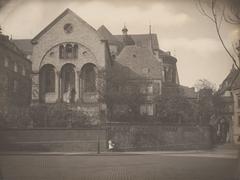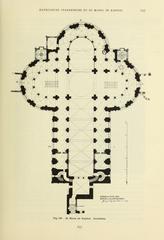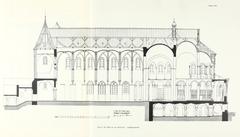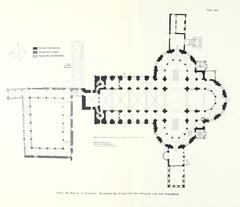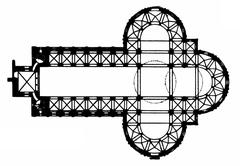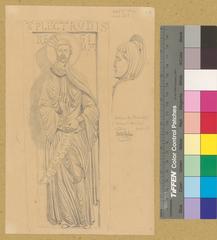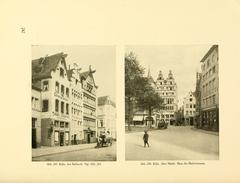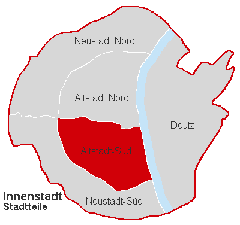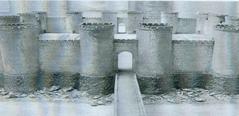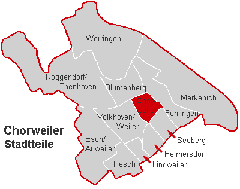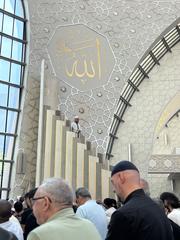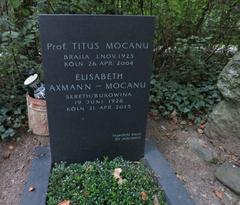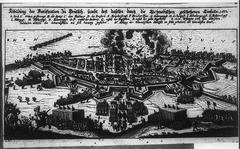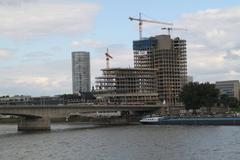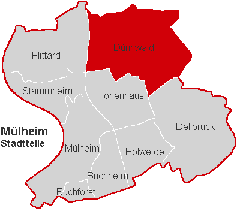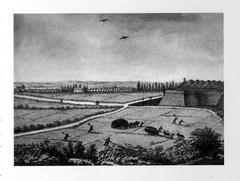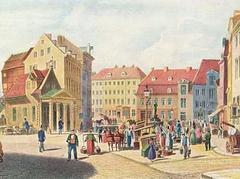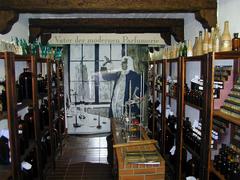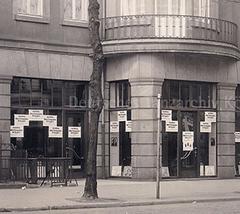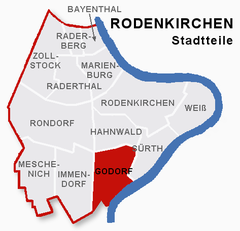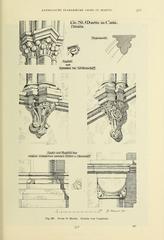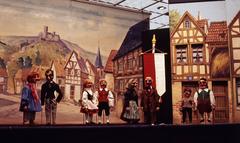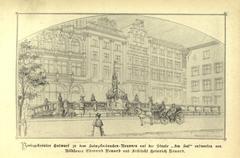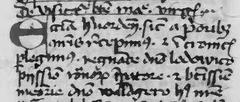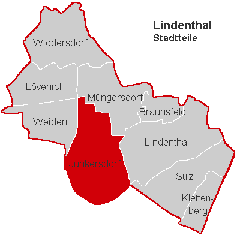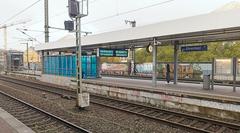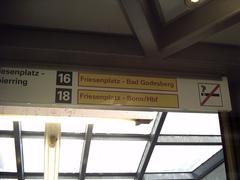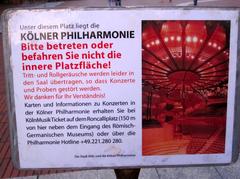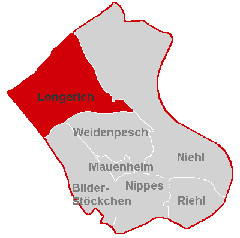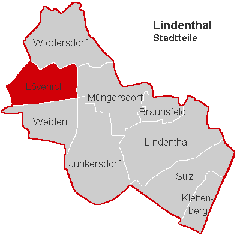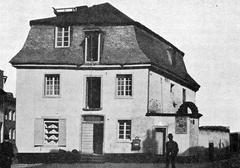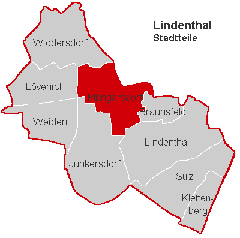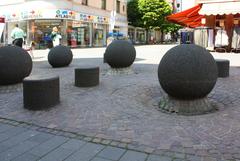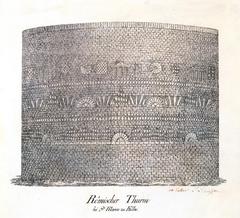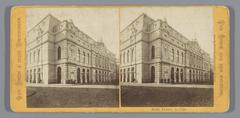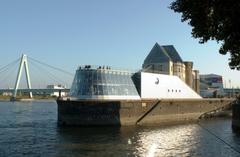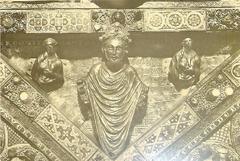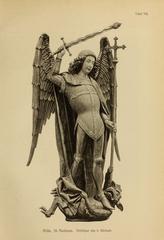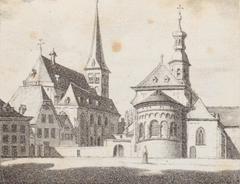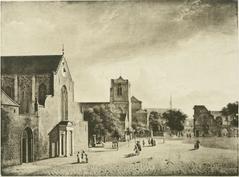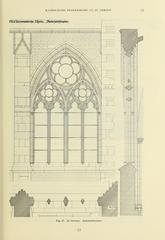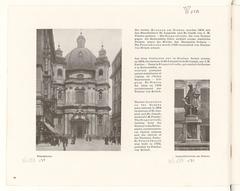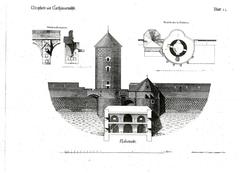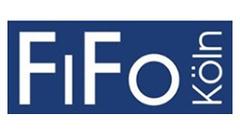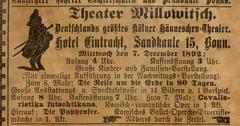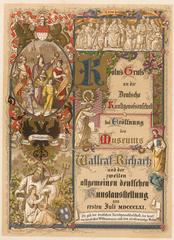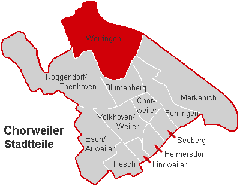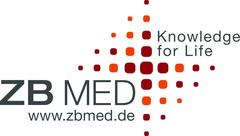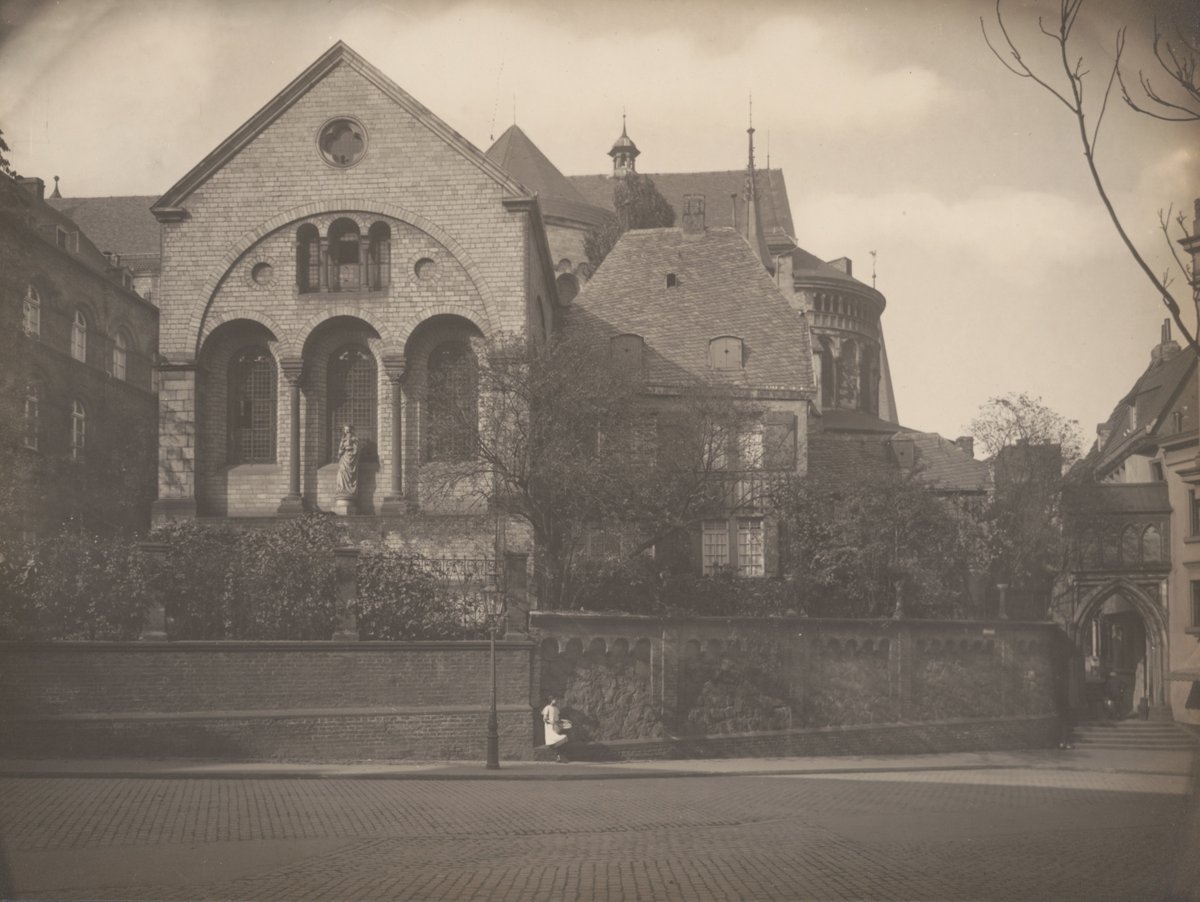
Comprehensive Guide to Visiting St. Maria im Kapitol, Cologne, Germany
Publication Date: 19/07/2024
Introduction: Overview and Hook
St. Maria im Kapitol, located in Cologne, Germany, is a remarkable historical and architectural landmark with a legacy that spans centuries. This guide aims to provide an in-depth look into its rich history, architectural significance, and practical visitor information to help you make the most of your visit. From its origins on the foundations of a Roman temple dedicated to the Capitoline Triad, to its current status as a cultural and religious icon, St. Maria im Kapitol offers a unique glimpse into the past and present of Cologne (Cologne Tourism) (Sacred Destinations). Whether you are an architecture enthusiast, history buff, or casual tourist, this guide will equip you with all the necessary information to explore this magnificent site.
Table of Contents: Key Sections
- Introduction
- History of St. Maria im Kapitol
- Early Foundations and Roman Influence
- Carolingian Beginnings
- Architectural Significance
- Medieval Enhancements
- Reformation and Baroque Period
- 19th Century Restoration
- World War II and Reconstruction
- Modern-Day Significance
- Visitor Information
- Visiting Hours
- Ticket Prices
- Accessibility
- Travel Tips
- Best Time to Visit
- Photography
- Dress Code
- Nearby Attractions
- Cologne Cathedral
- Roman-Germanic Museum
- Hohenzollern Bridge
- Old Town Cologne
- Special Events and Guided Tours
- Photographic Spots
- FAQ
- What are the visiting hours for St. Maria im Kapitol?
- Is there an admission fee?
- Is St. Maria im Kapitol accessible for visitors with disabilities?
- Are guided tours available?
- Can I take photographs inside the church?
- Conclusion
- Call to Action
History of St. Maria im Kapitol
Early Foundations and Roman Influence
St. Maria im Kapitol stands on a site with a rich history dating back to Roman times. The church is built on the foundations of a Roman temple dedicated to the Capitoline Triad—Jupiter, Juno, and Minerva. This temple was part of the Roman settlement of Colonia Claudia Ara Agrippinensium, established in 50 AD. The remnants of this Roman temple can still be seen in the crypt of the church, providing a tangible link to Cologne’s ancient past (Cologne Tourism).
Carolingian Beginnings
The current structure of St. Maria im Kapitol was initiated in the mid-11th century, around 1040, under the patronage of Abbess Ida, a niece of Emperor Otto I. The church was consecrated in 1065. This period marked the Carolingian Renaissance, a revival of art, culture, and architecture under the influence of the Carolingian dynasty. The church’s design reflects this era’s architectural style, characterized by its grand scale and the use of Romanesque elements (Sacred Destinations).
Architectural Significance
St. Maria im Kapitol is renowned for its unique trefoil basilica design, which includes three apses forming a cloverleaf shape. This architectural feature is rare and highlights the innovative spirit of the builders. The church’s dimensions are impressive, with a length of 100 meters and a width of 40 meters, making it one of the largest Romanesque churches in Cologne. The westwork, a monumental western entrance, is another significant feature, showcasing the grandeur typical of Romanesque architecture (ArchINFORM).
Medieval Enhancements
Throughout the Middle Ages, St. Maria im Kapitol underwent several modifications and enhancements. The church became a significant religious center, attracting pilgrims and worshippers. Notable additions during this period include the installation of a richly decorated wooden door, known as the “Heaven’s Door,” dating back to the 12th century. This door is adorned with intricate carvings depicting scenes from the Bible, showcasing the craftsmanship of medieval artisans (Kölner Dom).
Reformation and Baroque Period
The Reformation in the 16th century brought significant changes to the religious landscape of Europe, including Cologne. While St. Maria im Kapitol remained a Catholic stronghold, it faced challenges and transformations during this period. The Baroque era in the 17th century saw further modifications to the church’s interior, including the addition of elaborate altars and sculptures, reflecting the artistic trends of the time (Cologne Cathedral).
19th Century Restoration
The 19th century was a period of restoration and preservation for many historical buildings in Europe, including St. Maria im Kapitol. Under the direction of renowned architect Ernst Friedrich Zwirner, efforts were made to restore the church to its former glory. Zwirner, who also worked on the Cologne Cathedral, focused on preserving the Romanesque elements while incorporating Gothic Revival features. This restoration work was crucial in maintaining the structural integrity and historical significance of the church (Dehio, 2020).
World War II and Reconstruction
St. Maria im Kapitol, like many buildings in Cologne, suffered extensive damage during World War II. The church was heavily bombed, leading to the destruction of significant portions of its structure. The post-war period saw a dedicated effort to reconstruct and restore the church. The reconstruction work aimed to preserve the historical and architectural essence of St. Maria im Kapitol while incorporating modern techniques to ensure its longevity. This period also saw the discovery and preservation of Roman artifacts, further enriching the church’s historical narrative (Cologne Tourism).
Modern-Day Significance
Today, St. Maria im Kapitol stands as a testament to Cologne’s rich historical and architectural heritage. It is not only a place of worship but also a significant cultural and historical landmark. The church attracts thousands of visitors annually, drawn by its historical significance, architectural beauty, and the serene atmosphere it offers. The ongoing preservation efforts ensure that St. Maria im Kapitol remains a vital part of Cologne’s cultural landscape, bridging the past and the present (Sacred Destinations).
Visitor Information
Visiting Hours
St. Maria im Kapitol is open to visitors daily from 9:00 AM to 6:00 PM. However, visiting hours may vary during special events or religious ceremonies. It is advisable to check the official website or contact the church directly for the most up-to-date information.
Ticket Prices
Admission to St. Maria im Kapitol is free, but donations are appreciated to support the ongoing preservation efforts. Guided tours may incur a fee, and it is recommended to book in advance.
Accessibility
The church is accessible to visitors with disabilities. Ramps and designated pathways ensure that everyone can enjoy the historical and architectural marvels of St. Maria im Kapitol.
Travel Tips
- Best Time to Visit: Early mornings or late afternoons are ideal to avoid crowds.
- Photography: Photography is allowed, but please be respectful of worshippers and avoid flash photography inside the church.
- Dress Code: Modest attire is recommended, especially during religious services.
Nearby Attractions
- Cologne Cathedral: Just a short walk from St. Maria im Kapitol, this UNESCO World Heritage site is a must-visit.
- Roman-Germanic Museum: Explore artifacts from Cologne’s Roman past, located near the Cathedral.
- Hohenzollern Bridge: Famous for its love locks and stunning views of the Rhine River.
- Old Town Cologne: Wander through the charming streets filled with shops, cafes, and historical buildings.
Special Events and Guided Tours
St. Maria im Kapitol hosts various special events throughout the year, including concerts, religious festivals, and art exhibitions. Guided tours are available and offer in-depth insights into the church’s history and architecture. Booking in advance is recommended, especially during peak tourist seasons.
Photographic Spots
- Westwork Entrance: Capture the grandeur of the Romanesque architecture.
- Interior: The intricate carvings and altars provide stunning photo opportunities.
- Crypt: The remnants of the Roman temple offer a unique glimpse into Cologne’s ancient history.
FAQ
Q: What are the visiting hours for St. Maria im Kapitol?
A: The church is open daily from 9:00 AM to 6:00 PM, but it is advisable to check the official website for any changes.
Q: Is there an admission fee?
A: Admission is free, but donations are appreciated. Guided tours may have a fee.
Q: Is St. Maria im Kapitol accessible for visitors with disabilities?
A: Yes, the church is accessible, with ramps and designated pathways.
Q: Are guided tours available?
A: Yes, guided tours are available and provide detailed insights into the church’s history and architecture.
Q: Can I take photographs inside the church?
A: Yes, photography is allowed, but please be respectful and avoid using flash.
Conclusion: Recap and Final Thoughts
St. Maria im Kapitol stands as a testament to Cologne’s rich historical and architectural heritage. Its journey from a Roman temple foundation to a significant Romanesque church encapsulates the city’s cultural evolution. Today, it remains a vital part of Cologne’s cultural landscape, attracting thousands of visitors annually who are drawn by its historical significance, architectural beauty, and serene atmosphere (Cologne Cathedral). The ongoing preservation efforts ensure that St. Maria im Kapitol continues to inspire and educate future generations. By visiting this iconic church, you not only explore a piece of history but also contribute to the preservation of a cultural treasure. Plan your visit and immerse yourself in the historical and architectural marvels of St. Maria im Kapitol, and don’t forget to check out nearby attractions and follow our travel tips for a seamless experience.
References: Credible Sources and Further Reading
- Cologne Tourism
- Sacred Destinations
- ArchINFORM
- Kölner Dom
- Dehio, 2020
- Romanesque Churches of Cologne
- Pilgrimage Sites
- Sacred Architecture
- Medieval Art
- Cologne Events
- Visit Cologne
- Cologne Attractions
- Roman-Germanic Museum
- Museum Ludwig
- Brauhaus Sion
- Peters Brauhaus
- Cologne Cathedral Shop
- Hohe Straße
- St. Maria im Kapitol
